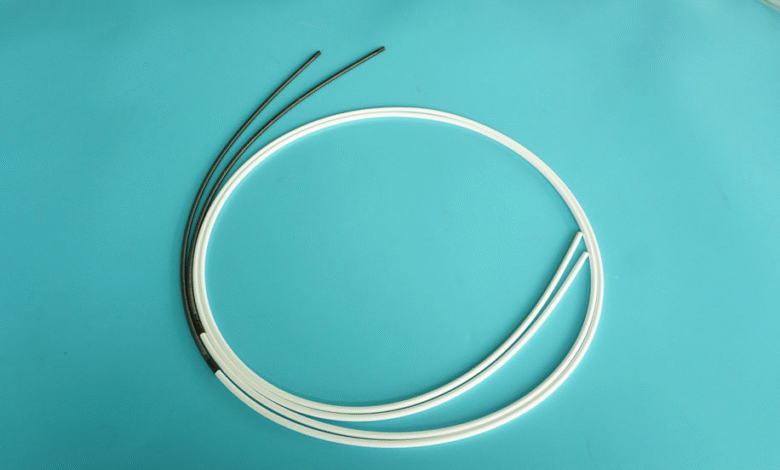From Design to Diagnosis: The Hidden Technology Behind Medical Tools

Modern medicine is not based only on the professional skills of the doctors or on the accuracy of the diagnoses, but it is based on the engineering genius in the devices applied by the doctors. Whether it is detailed in-depth investigations or high precision sampling, all processes are based on elements that have been carefully designed. Among these, the biopsy channel in endoscopic instruments and high-precision mold parts in device manufacturing play critical roles.
Although invisible to the patients, these technologies define reliability, functionality, and safety of the diagnostic and therapeutic equipment. This article will discuss the role that these unheralded elements play in connecting the design laboratory to clinical excellence.
Biopsy Channels: Pathways to Accurate Tissue Sampling
The biopsy channel is a core feature of flexible and rigid endoscopic instruments. This specialized hollow channel inside the scope enables the doctor to insert biopsy forceps or cytology brushes in order to take tissue samples inside the body. Although it seems like a simple tunnel, the biopsy channel’s design must meet demanding medical and mechanical standards.
To begin with, it should be an easy, unhindered way of using instruments. Any opposition in the channel can slow down the procedures or even destroy the tissue. To accomplish this, the manufacturers apply lubricious coatings like PTFE (polytetrafluoroethylene) or polyurethane coating which minimizes friction and enhances maneuverability.
Second, the channel should be able to retain shape when subjected to bending and torsion. In operations such as colonoscopy or bronchoscopy, the endoscope may have to maneuver through narrow turns. The biopsy channel needs to stay open and aligned even as the rest of the scope flexes. To support it without losing flexibility, engineers usually support it with spiral wire or braided support frameworks.
Third, sterility and durability are not negotiable. Reusable endoscopes are repeatedly sterilized, which may use high temperatures or chemical disinfectants. The biopsy channel must resist degradation over time while ensuring it remains microbiologically safe.
In addition to design, performance also relates to precision of the diameter, which determines the size of the instruments that can be passed. Larger tools used in biopsy need slightly larger channels in advanced procedures and this makes the overall scope structure complex. This needs careful manufacturing tolerances to prevent leakage, breakage or loss of suction.
High-Precision Mold Parts: Building Blocks of Medical Device Manufacturing
While biopsy channels represent the functional side of diagnostic tools, their production—and that of countless other medical devices—relies heavily on high-precision mold parts. These elements are the basic instruments of the injection molding procedure, where plastic or metal pieces are created with the high level of detail and repeatability.
High-precision mold parts are not generic or interchangeable. They are designed and made in order to make components with tolerances of a few microns. Such precision is essential in the medical sector where a misalignment of a fraction of a millimeter may cause a device to fail or cause injury.
These mold parts typically shape:
- Endoscope handles and housings
- Valve components
- Tubing connectors and ports
- Internal linings for biopsy channels
- Disposable diagnostic accessories
When Micro-Engineering Meets Clinical Application:
The combination of micro-engineering and medical application is not a coincidence, it is the fruit of collaborative innovation. Biopsy channels and high-precision mold parts exemplify this relationship. One is an operational part that is directly involved in diagnostics and another one is a backstage instrument that enables the former.
An application of this synergy in the real world is the production of single use endoscopic biopsy forceps. These tools must be small enough to pass through the biopsy channel yet robust enough to snip tissue samples accurately. Mold parts that are used to make these forceps must yield miniature jaws, hinges and shafts that are within precise tolerances. The forceps might fail to work, which endangers the patient in case the mold is not precise even by a few microns.
Similarly, biopsy channels made with insufficient precision may cause delays or failures during procedures. This has a direct impact on clinical outcomes. In order to fill this gap, design engineers and biomedical experts collaborate closely at development stages and convert medical needs into mechanical designs.
Another area of innovation is hybrid components—biopsy channels that incorporate sensors or optical fibers for dual-functionality. The manufacture of such complex assemblies is only possible due to the fact that micro-engineering permits multi-layered molding and integration of parts.
Such cross-functional technologies combine clinical precision and mechanical perfection to a new harmony and redefine the way medical tools are conceived and created. They are evidence that innovation in medicine does not start and stop with the hands of the doctor, it starts with the drawing board of the engineer.
Ensuring Accuracy: Standards, Safety, and Performance
Compliance and quality assurance are the most important in the production of medical devices. Any part, whether a biopsy channel or a high-precision mold, must conform to international regulatory standards to ensure safety and reliability in patient care.
For biopsy channels, testing protocols include:
- Leakage tests to ensure fluid tightness under pressure
- Tensile strength tests to check resistance during instrument passage
- Repeated flex testing to assess longevity under bending conditions
- Sterility assurance following ISO 11135 or ISO 17665 standards
All of these tests ensure that the channel would perform reliably even when being subjected to the challenge of actual clinical usage.
In the same way, mold parts are also subjected to dimensional accuracy test, wear resistance test and material certification. They should be produced in cleanrooms when they are meant to be used in the manufacture of medical-grade devices. The whole process of design control to final inspection is governed by the Quality System Regulation (QSR) and ISO 13485 standards of FDA.
Manufacturers of medical equipment and devices should also have traceability, which is the possibility to trace all parts to the source material and production batch.
Performance metrics, especially for diagnostic tools involving biopsy channels, directly influence patient outcomes. Poor quality of samples or faulty equipment may cause re-tests or misdiagnosis. Consequently, care in each of the manufacturing processes is not only necessary to meet the standards but to entrust medical care.
The combination of quality, accuracy, and efficiency guarantees the fact that medical devices operate not only as designed but also as required in stressful clinical settings.
Conclusion:
Modern medicine is an industry that is not only dependent on the technologies that are evident to the naked eye but also the invisible elements that determine performance. From the biopsy channel, which provides the pathway for tissue diagnosis, to the high-precision mold parts that form the very architecture of medical tools, these elements are integral to clinical success.
They are designed, manufactured and quality-checked in a way that demonstrates a blend of engineering perfection and medical imperative. Their combination makes sure that when a doctor is conducting a life-saving biopsy or providing care with the help of advanced tools, the tools in their hand are accurate, dependable, and secure.
Even as the world of healthcare moves towards a more advanced direction, so will the technology behind the instruments that are used in the field- moving forward slowly, yet surely, one perfectly crafted part at a time.




